STEVE DOWLING INTERVIEW
Around 1999, I had an email from the grandson of Steve Dowling who was living in Canada. I learnt that Steve had been bumped out of his job simply because he had reached 65 years of age (only in the UK!). He then spent many years living off a poor pension. Steve had no original art from his newspaper strip days to show his family -it’s why I was contacted because of my British Comic Books Archive project.
Apparently the family had asked the Daily Mirror newspaper if it could just get some photocopies of the pages for themselves. No. They asked then editor Piers Morgan (can I spit?) who basically responded that he had no time to waste of dumb comic strips (his hatred of them is well recorded).
I lost the email from the family when my old computer blew. IF Steve’s family in Canada read this then I have Garth strips I can offer on share file.
But now, the interview:

Published in ‘Ally Sloper’ #1, 1976, and reprinted in ‘Comic Bits’ #1, 2001. Denis Gifford conducts an on-stage interview at ‘Comics 101′ on 20 March 1976 with Garth creator Steve Dowling, who died in 1986.
STEVE: I might say that it’s been more than worthwhile to come all this way, because I thought nobody knew me any more, let alone thought me worthy of an award! Everybody’s been so kind to me and said so many nice things that I’ve really been rather overwhelmed by it all. Thank you very much, everyone.
DENIS: Well, we’ll get on to the British newspaper strip, which you were almost solely responsible for. You worked under several different names and different styles. How did it all start?
STEVE: It started by my going riding with a friend who did a strip called ‘Tich’ in the Daily Mirror, the ideas for which were supplied by my brother, Frank. Coming back from this event, rather full of liquor, unfortunately there was a car accident and the artist, Martin, died. And so I had to step into his shoes and was plummeted into the strip business in a rather shaky condition, having gone through the roof of a car! ‘Tich’ ran for some years. [from 1931 - DG]
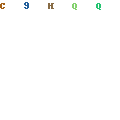
DENIS: But you were an artist before this?
STEVE: I was in advertising. As a matter of fact, I was at the time Assistant Art Director for Dorland Advertising at the age of 24. I gave up my job at Dorland’s because I could do ‘Tich’ in one day a week – there were very few lines in the thing, very slick little drawings – and then I could go down by the seaside and put my feet up for the rest of the week, which was very nice indeed!
DENIS: There were strips in the Mirror before ‘Tich’, ‘Dud’ and ‘Jinks’ and so on – but after ‘Tich’ strips seem to blossom.
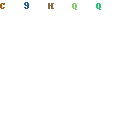
STEVE: Well, old Guy Bartholomew who was chairman of the Mirror was mad hot about strips. Having been an artist himself he regarded the strips as the main part of the paper. His opinion was that most people couldn’t read, anyway, and liked looking at pictures!
DENIS: What was the genesis of ‘Ruggles’, your first real strip?
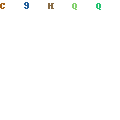
STEVE: I think having seen American continuity strips. I got the idea for this character ‘John Ruggles’, an ordinary chap, and my brother who had quite a gift for humorous writing,wrote the words. In point of fact I think ‘Ruggles’ was the first continuity strip to appear in a national daily. The others were all daily incidents. The idea of having a serial story run in picture form was new in this country, although, of course, it had been done in America. I remember Cecil King, who was rather small-fry then, always wanted me to make ‘Ruggles’ build a shed in his garden, because his 14 year-old son had suggested the idea! If I had taken King’s advice ‘Ruggles’ garden would have been so stiff with sheds that he wouldn’t have been able to move!
DENIS: Did you sit down and create ‘Ruggles’ as the average man with an average family?
STEVE: Very average! In fact we were trying to write down to the readers, a thing one should not do! Trying to make the strip as like the family life as we could. After a time my brother gave it up – he became the editor of the Picture Post instead – and I took it over. I tried to strengthen the storyline and some of the humour went out of it.
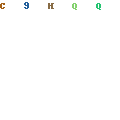 Steve Dowling receiving an Ally Sloper award from Denis Gifford and Bob Monkhouse at Comics 101
Steve Dowling receiving an Ally Sloper award from Denis Gifford and Bob Monkhouse at Comics 101
DENIS: Why did you sign it with a pseudonym: ‘Ruggles – by Blik’?
STEVE: Oh, that was just a short name like: ‘Tich – by Dart’.
DENIS: And: ‘Belinda Blue Eyes – by Gloria’?
STEVE: Oh, I was just one of a long line of Glorias! That was actually written in the first place by Bill Connor, who later became Sir William, ‘Cassandra’. He wrote it to order for Bartholomew the chairman. Everybody took a hand in those days. Basil Nicholson, the editor, who was the man who re-modelled the Mirror, his idea of having a comic strip was to have a different person every day slipping on a banana skin. One day a clergyman, the next day a policeman; he thought that was the level of public understanding.
DENIS: Later ‘Ruggles’ featured the public actually in the strip. How did that unique series come about?
STEVE: They thought the strip was flagging a bit and Philip Zec, who was then the strip editor, asked me to come up with a twist. Well, Wilfred Pickles on the radio was then ‘Meeting the People’ and I thought I would try this in strip form. I took some roughs into Zec, who didn’t think much of the idea. He took it to the chairman, and next day I got a telegram from Zec: “Please draw some more along the lines I suggested.” Well, I did, and Zec got into trouble for claiming it was his idea – it became the chairman’s idea! But I must say that the idea eventually reverted to me – when they found that the series didn’t go down very well!!
DENIS: Why did ‘Ruggles’ come to an end?
STEVE: Well, they felt it wasn’t pulling. They asked for letters and, of course, more people will write and say they don’t like a thing than those who do, so ‘Ruggles’ went.
DENIS: And so, we come, at last to Garth. How and why did he begin?
STEVE: I had been writing and drawing ‘Belinda . . .’ and not enjoying it very much. Then they found another artist, Tony Royle, to take it on, so they asked me to produce another strip in order to justify my salary. It took me about three months to think up Garth and draw the first three weeks’ strips. The chairman thought that was rather too long – so he docked my pay!
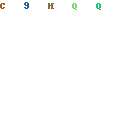
DENIS: Did you set out to create a British equivalent to ‘Superman’?
STEVE: No, ‘Terry and the Pirates’ was my great influence, if anything. I was rather interested in Tibet, and the Forbidden City, and the magic that was there. For instance, in the beginning Garth was resuscitated by the ‘kiss of life’ from a rather attractive young woman called Gala. Well, the ‘kiss of life’ was not known here then, but I had read about it in a book on Tibet.
DENIS: Garth was a man of mystery. Did you have a solution in mind from the start?
STEVE: Oh, no. I had no solution at all. I had no more idea who Garth was than the reader!
DENIS: One mystery was that Garth drifted in from the sea, and there is no sea around Tibet!
STEVE: Artistic licence!
DENIS: Another striking feature was the constantly bared bosom of one of Garth’s girlfriends.
STEVE: One had to fight to show a little in those days.
DENIS: A “little”? I’d call it a lot! I suppose the exposure was very calculated?
STEVE: Oh yes. I certainly enjoyed drawing it.
DENIS: Why did you stop drawing Garth?
STEVE: I had to. I was freelance up to 1949. Then I joined the staff to get a pension, and when I reached the age of 65 I had to go. That was the rule, so I went.
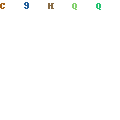 Self drawn illo for Ally Sloper Magazine
Self drawn illo for Ally Sloper Magazine
Around 1999, I had an email from the grandson of Steve Dowling who was living in Canada. I learnt that Steve had been bumped out of his job simply because he had reached 65 years of age (only in the UK!). He then spent many years living off a poor pension. Steve had no original art from his newspaper strip days to show his family -it’s why I was contacted because of my British Comic Books Archive project.
Apparently the family had asked the Daily Mirror newspaper if it could just get some photocopies of the pages for themselves. No. They asked then editor Piers Morgan (can I spit?) who basically responded that he had no time to waste of dumb comic strips (his hatred of them is well recorded).
I lost the email from the family when my old computer blew. IF Steve’s family in Canada read this then I have Garth strips I can offer on share file.
But now, the interview:

Published in ‘Ally Sloper’ #1, 1976, and reprinted in ‘Comic Bits’ #1, 2001. Denis Gifford conducts an on-stage interview at ‘Comics 101′ on 20 March 1976 with Garth creator Steve Dowling, who died in 1986.
STEVE: I might say that it’s been more than worthwhile to come all this way, because I thought nobody knew me any more, let alone thought me worthy of an award! Everybody’s been so kind to me and said so many nice things that I’ve really been rather overwhelmed by it all. Thank you very much, everyone.
DENIS: Well, we’ll get on to the British newspaper strip, which you were almost solely responsible for. You worked under several different names and different styles. How did it all start?
STEVE: It started by my going riding with a friend who did a strip called ‘Tich’ in the Daily Mirror, the ideas for which were supplied by my brother, Frank. Coming back from this event, rather full of liquor, unfortunately there was a car accident and the artist, Martin, died. And so I had to step into his shoes and was plummeted into the strip business in a rather shaky condition, having gone through the roof of a car! ‘Tich’ ran for some years. [from 1931 - DG]

DENIS: But you were an artist before this?
STEVE: I was in advertising. As a matter of fact, I was at the time Assistant Art Director for Dorland Advertising at the age of 24. I gave up my job at Dorland’s because I could do ‘Tich’ in one day a week – there were very few lines in the thing, very slick little drawings – and then I could go down by the seaside and put my feet up for the rest of the week, which was very nice indeed!
DENIS: There were strips in the Mirror before ‘Tich’, ‘Dud’ and ‘Jinks’ and so on – but after ‘Tich’ strips seem to blossom.

STEVE: Well, old Guy Bartholomew who was chairman of the Mirror was mad hot about strips. Having been an artist himself he regarded the strips as the main part of the paper. His opinion was that most people couldn’t read, anyway, and liked looking at pictures!
DENIS: What was the genesis of ‘Ruggles’, your first real strip?

STEVE: I think having seen American continuity strips. I got the idea for this character ‘John Ruggles’, an ordinary chap, and my brother who had quite a gift for humorous writing,wrote the words. In point of fact I think ‘Ruggles’ was the first continuity strip to appear in a national daily. The others were all daily incidents. The idea of having a serial story run in picture form was new in this country, although, of course, it had been done in America. I remember Cecil King, who was rather small-fry then, always wanted me to make ‘Ruggles’ build a shed in his garden, because his 14 year-old son had suggested the idea! If I had taken King’s advice ‘Ruggles’ garden would have been so stiff with sheds that he wouldn’t have been able to move!
DENIS: Did you sit down and create ‘Ruggles’ as the average man with an average family?
STEVE: Very average! In fact we were trying to write down to the readers, a thing one should not do! Trying to make the strip as like the family life as we could. After a time my brother gave it up – he became the editor of the Picture Post instead – and I took it over. I tried to strengthen the storyline and some of the humour went out of it.
 Steve Dowling receiving an Ally Sloper award from Denis Gifford and Bob Monkhouse at Comics 101
Steve Dowling receiving an Ally Sloper award from Denis Gifford and Bob Monkhouse at Comics 101DENIS: Why did you sign it with a pseudonym: ‘Ruggles – by Blik’?
STEVE: Oh, that was just a short name like: ‘Tich – by Dart’.
DENIS: And: ‘Belinda Blue Eyes – by Gloria’?
STEVE: Oh, I was just one of a long line of Glorias! That was actually written in the first place by Bill Connor, who later became Sir William, ‘Cassandra’. He wrote it to order for Bartholomew the chairman. Everybody took a hand in those days. Basil Nicholson, the editor, who was the man who re-modelled the Mirror, his idea of having a comic strip was to have a different person every day slipping on a banana skin. One day a clergyman, the next day a policeman; he thought that was the level of public understanding.
DENIS: Later ‘Ruggles’ featured the public actually in the strip. How did that unique series come about?
STEVE: They thought the strip was flagging a bit and Philip Zec, who was then the strip editor, asked me to come up with a twist. Well, Wilfred Pickles on the radio was then ‘Meeting the People’ and I thought I would try this in strip form. I took some roughs into Zec, who didn’t think much of the idea. He took it to the chairman, and next day I got a telegram from Zec: “Please draw some more along the lines I suggested.” Well, I did, and Zec got into trouble for claiming it was his idea – it became the chairman’s idea! But I must say that the idea eventually reverted to me – when they found that the series didn’t go down very well!!
DENIS: Why did ‘Ruggles’ come to an end?
STEVE: Well, they felt it wasn’t pulling. They asked for letters and, of course, more people will write and say they don’t like a thing than those who do, so ‘Ruggles’ went.
DENIS: And so, we come, at last to Garth. How and why did he begin?
STEVE: I had been writing and drawing ‘Belinda . . .’ and not enjoying it very much. Then they found another artist, Tony Royle, to take it on, so they asked me to produce another strip in order to justify my salary. It took me about three months to think up Garth and draw the first three weeks’ strips. The chairman thought that was rather too long – so he docked my pay!

DENIS: Did you set out to create a British equivalent to ‘Superman’?
STEVE: No, ‘Terry and the Pirates’ was my great influence, if anything. I was rather interested in Tibet, and the Forbidden City, and the magic that was there. For instance, in the beginning Garth was resuscitated by the ‘kiss of life’ from a rather attractive young woman called Gala. Well, the ‘kiss of life’ was not known here then, but I had read about it in a book on Tibet.
DENIS: Garth was a man of mystery. Did you have a solution in mind from the start?
STEVE: Oh, no. I had no solution at all. I had no more idea who Garth was than the reader!
DENIS: One mystery was that Garth drifted in from the sea, and there is no sea around Tibet!
STEVE: Artistic licence!
DENIS: Another striking feature was the constantly bared bosom of one of Garth’s girlfriends.
STEVE: One had to fight to show a little in those days.
DENIS: A “little”? I’d call it a lot! I suppose the exposure was very calculated?
STEVE: Oh yes. I certainly enjoyed drawing it.
DENIS: Why did you stop drawing Garth?
STEVE: I had to. I was freelance up to 1949. Then I joined the staff to get a pension, and when I reached the age of 65 I had to go. That was the rule, so I went.
 Self drawn illo for Ally Sloper Magazine
Self drawn illo for Ally Sloper Magazine
No comments:
Post a Comment